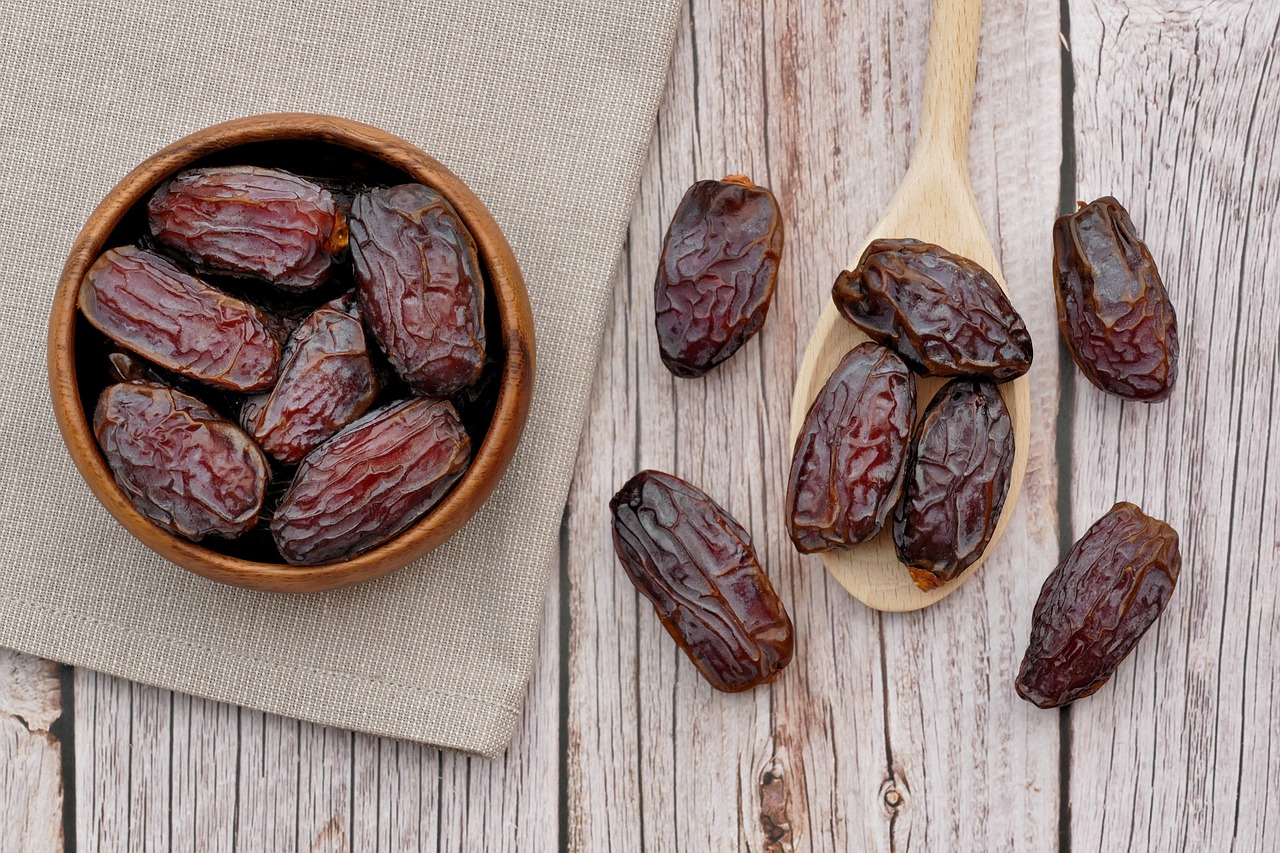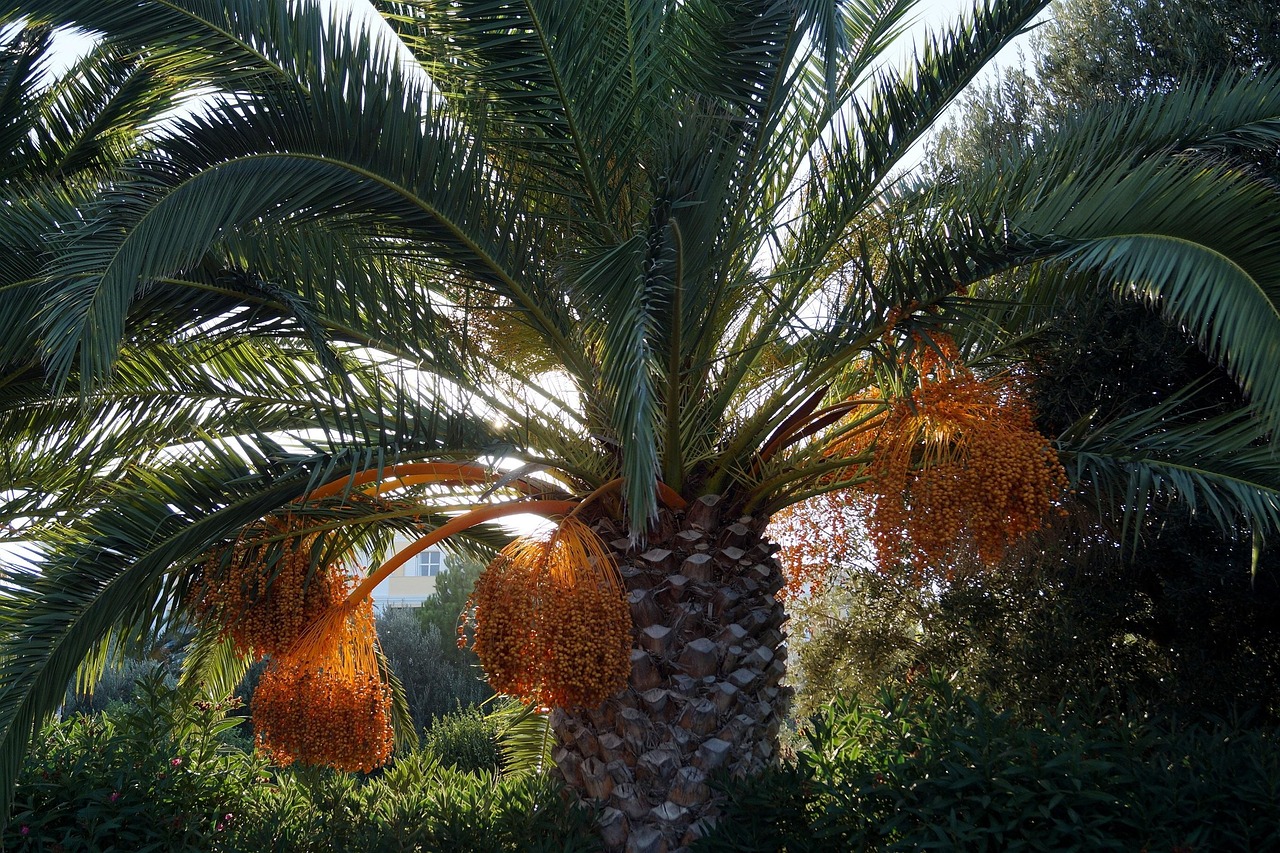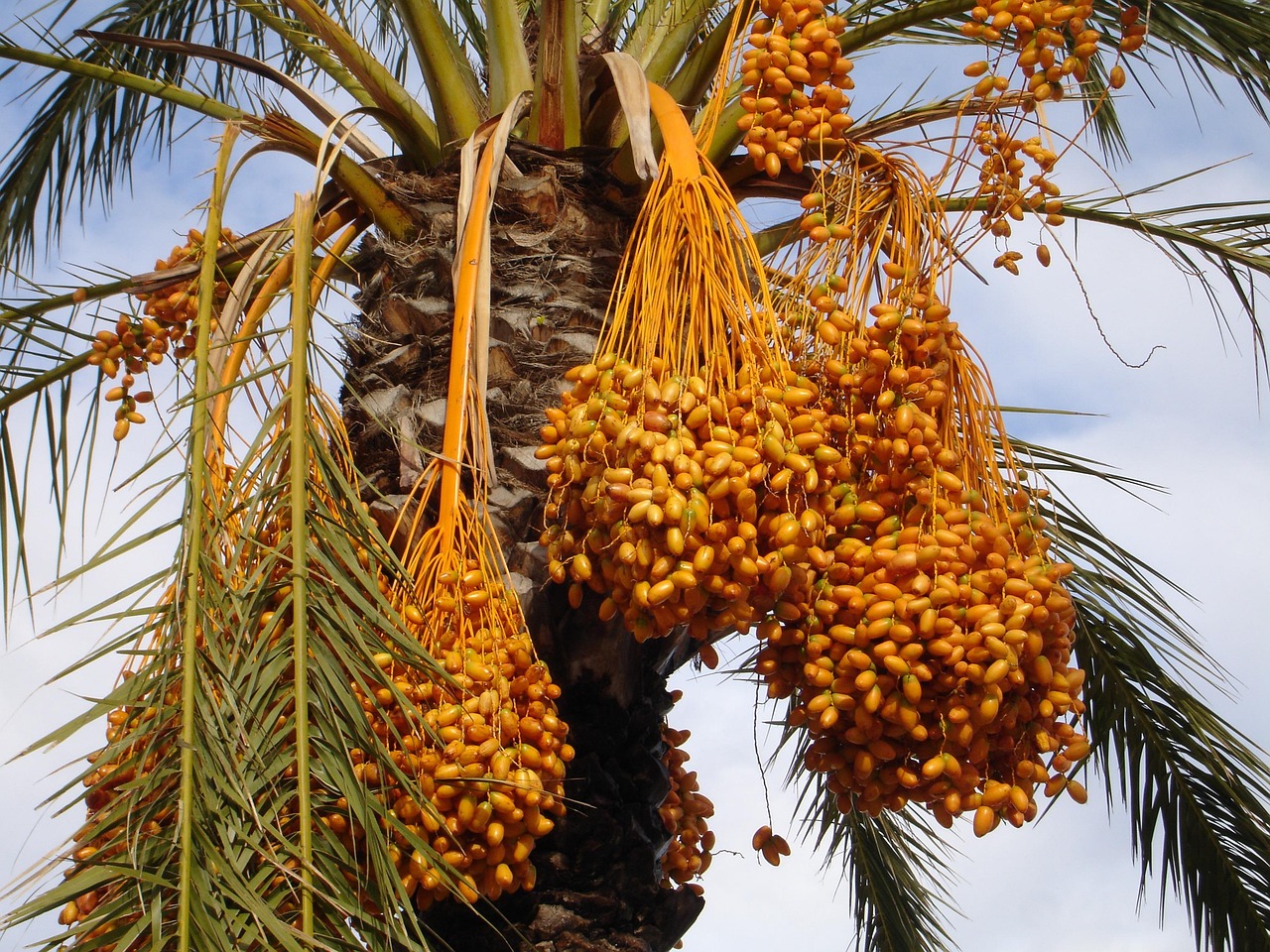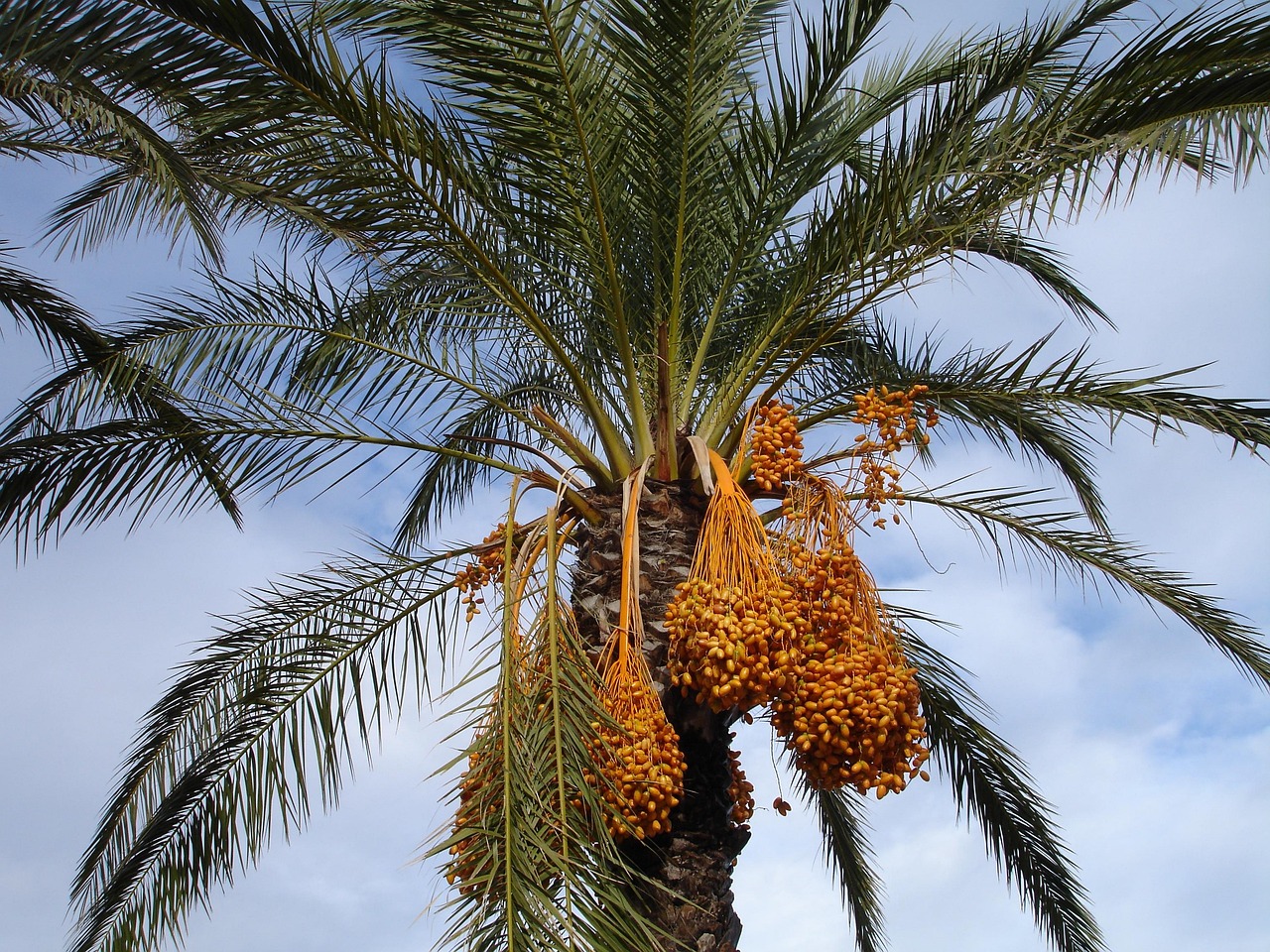Date palm pruning is essential for maintaining healthy growth and aesthetics in oasis landscaping. Regular pruning removes dead fronds, encourages new growth, and enhances fruit production. Proper techniques ensure the longevity of the palms and improve the overall landscape appearance.
Date palms, scientifically known as Phoenix dactylifera, are iconic trees in many desert regions and oases. Their tall, slender trunks and lush fronds provide shade, beauty, and a source of delicious fruit. Pruning these palms is crucial for several reasons. It promotes health, supports fruit production, and enhances visual appeal. However, improper pruning can lead to damage or disease.

Understanding when and how to prune date palms is vital for any oasis landscaping project. This article will cover essential pruning tips, methods, tools needed, and the best times to prune for optimal results.
Importance of Pruning Date Palms
Pruning date palms plays a significant role in their overall health and productivity. Here are some key benefits:
- Health Improvement: Removing dead or dying fronds prevents disease spread.
- Enhanced Growth: Pruning encourages new growth and better air circulation.
- Fruit Production: Proper pruning can increase the yield of dates.
- Aesthetic Value: Well-maintained palms add beauty to the landscape.
Moreover, date palms can grow quite tall, making them a striking feature in any landscape. Maintaining their appearance through regular pruning helps keep them manageable and visually appealing.

Best Times to Prune Date Palms
The timing of pruning is just as important as the technique. The best times to prune date palms include:
| Season | Reason for Pruning |
|---|---|
| Spring | Promotes new growth before the hot summer months. |
| Fall | Prepares the tree for winter and reduces stress during cold months. |
| After Harvest | Removes excess fronds that can affect next season’s fruit yield. |
Pruning during these times ensures that the palms remain healthy and productive. Avoid pruning during extreme temperatures or when the tree is under stress from drought or disease.
Tools Needed for Pruning
Having the right tools is essential for effective pruning. Here are some common tools used for date palm pruning:

- Hand Pruners: Ideal for small fronds and detailed work.
- Loppers: Suitable for larger fronds that are harder to reach.
- Saws: Necessary for cutting thick branches or trunks.
- Safety Gear: Gloves, goggles, and long sleeves protect against sharp fronds and debris.
Using sharp, clean tools prevents damage to the tree. Ensure that all equipment is disinfected to avoid spreading diseases between plants.
Pruning Techniques
Effective pruning requires specific techniques to avoid harming the tree. Here are some tips on how to prune date palms properly:
- Avoid Over-Pruning: Remove only dead or diseased fronds. Excessive pruning can stress the tree.
- Cut at the Base: Always cut fronds at their base without damaging the trunk.
- Angle Cuts: Make angled cuts to allow water runoff and prevent rot.
- Inspect Regularly: Check palms regularly for signs of disease or pests during pruning sessions.
Following these techniques ensures that your date palms remain healthy and vibrant. Regular maintenance will also reduce the need for extensive pruning later on.

In summary, effective date palm pruning not only maintains the health of the trees but also enhances the beauty of oasis landscapes. By understanding the importance of timing, having the right tools, and applying proper techniques, you can ensure your date palms thrive in their environment. This foundational knowledge sets the stage for more intricate aspects of date palm care in subsequent sections.
Common Pests and Diseases of Date Palms
Maintaining the health of date palms involves not only pruning but also monitoring for pests and diseases. Understanding these threats is crucial for effective management. Here are some common pests and diseases that affect date palms:
Pests
- Red Palm Weevil: This invasive pest burrows into the trunk, causing significant damage and weakening the plant.
- Scale Insects: These insects appear as small, white or brown spots on fronds and can lead to yellowing and wilting.
- Spider Mites: These tiny pests thrive in dry conditions and can cause leaf discoloration and stippling.
- Mealybugs: Mealybugs feed on sap and can weaken the palm, leading to stunted growth.
Diseases
- Bayoud Disease: Caused by a fungus, this disease leads to yellowing leaves and can be fatal.
- Fusarium Wilt: This soil-borne fungus infects the roots, causing wilting and eventual death of the tree.
- Leaf Spot Disease: Various fungi cause brown spots on leaves, which can weaken the palm over time.
- Root Rot: Overwatering can lead to root rot, which is often fatal if not addressed promptly.
To combat these pests and diseases, regular inspections are essential. Early detection allows for timely interventions that can save your date palms from severe damage.
Integrated Pest Management (IPM) Strategies
Adopting an Integrated Pest Management (IPM) approach helps in the efficient management of pests and diseases. This holistic strategy combines cultural, biological, and chemical methods to maintain palm health. Here are some effective IPM strategies:
- Cultural Control: Implement practices such as proper watering, fertilization, and pruning to improve tree vigor.
- Biological Control: Introduce natural predators like ladybugs to control pest populations.
- Chemical Control: Use pesticides judiciously. Always follow application guidelines to minimize harm to beneficial organisms.
- Regular Monitoring: Inspect palms frequently for signs of pests or disease. Early detection is key to effective management.
This proactive approach helps maintain a balanced ecosystem while protecting your date palms from potential threats.
Watering Practices for Healthy Date Palms
Proper watering is essential for the health of date palms. Too much or too little water can lead to various problems, including root rot or stunted growth. Here are some key practices for effective watering:
- Soil Type: Understand the soil composition. Sandy soils drain quickly, while clay soils retain moisture longer. Adjust your watering schedule accordingly.
- Watering Frequency: Water young palms more frequently than mature ones. Generally, mature date palms need watering every 10 to 14 days during dry periods.
- Irrigation Methods: Drip irrigation is recommended as it delivers water directly to the roots while minimizing evaporation and runoff.
- Avoid Overwatering: Ensure that the soil dries out slightly between watering sessions to prevent root rot.
Monitoring soil moisture levels helps determine when and how much to water your date palms effectively.
Nutritional Needs of Date Palms
Date palms require specific nutrients for optimal growth and fruit production. Understanding their nutritional needs allows for targeted fertilization. The following nutrients are particularly important:
| Nutrient | Function |
|---|---|
| Nitrogen (N) | Promotes leaf growth and overall vigor. |
| Phosphorus (P) | Enhances root development and flowering. |
| Potassium (K) | Improves fruit quality and resistance to disease. |
| Magnesium (Mg) | Aids in chlorophyll production, which is vital for photosynthesis. |
The application of a balanced fertilizer specifically designed for palms is recommended. This ensures that they receive adequate amounts of these essential nutrients throughout the growing season.
Seasonal Care Tips
Date palm care varies with the seasons. Implementing seasonal practices helps keep the palms healthy year-round:
Spring Care
- Conduct pruning to remove any dead or damaged fronds.
- Apply a balanced fertilizer to promote new growth.
- Inspect for pests emerging as temperatures rise.
Summer Care
- Ensure adequate watering during hot months.
- Monitor for signs of heat stress, such as wilting leaves.
- Provide shade if necessary to protect young palms from extreme sun exposure.
Fall Care
- Prepare palms for cooler temperatures by reducing watering frequency.
- Continue monitoring for pests as they may seek shelter in palm fronds.
winter Care
- Avoid excessive watering as palms enter dormancy.
- Protect young palms from frost by covering them if temperatures drop significantly.
By following these seasonal care tips, you can ensure your date palms remain healthy through varying environmental conditions, which is vital for their long-term success in oasis landscaping.
Harvesting Dates: Timing and Techniques
Harvesting dates is a crucial aspect of managing date palms, especially if you aim to enjoy the fruits of your labor. Understanding when and how to harvest is essential for maximizing yield and quality. This section will explore the optimal timing for harvesting dates and the techniques involved in the process.
Timing the Harvest
The timing of the harvest depends on the variety of date palm and the climate conditions. Dates typically mature over several months, transitioning through different stages. Here are some key indicators to determine when to harvest:
- Color Change: As dates ripen, they change color from green to yellow, red, or brown, depending on the variety.
- Texture: Ripe dates will feel slightly soft when squeezed. The texture varies with each variety.
- Taste: Sampling a few dates can provide insight into their ripeness. They should taste sweet and flavorful.
- Weather Conditions: Harvesting should ideally occur when temperatures are cooler, usually in the early morning or late afternoon.
Monitoring these signs closely will help ensure that you harvest at the right time for maximum flavor and quality.
Harvesting Techniques
Proper harvesting techniques are essential to avoid damaging the fruit and tree. Here are the recommended methods for harvesting dates:
- Hand Harvesting: For small numbers of trees, hand harvesting is effective. Use a pair of gloves to protect your hands from sharp fronds and pests.
- Use of Ladders: For taller palms, use a sturdy ladder to reach the fruit clusters. Ensure it is stable before climbing.
- Cutting Clusters: Use sharp pruning shears to cut the date clusters cleanly. Avoid pulling them off to prevent damaging the tree.
- Harvesting Bags: Gather harvested dates into breathable bags to prevent bruising and allow air circulation.
Following these techniques will help maintain the quality of harvested dates while ensuring the health of the palms.
Date Palm Care Post-Harvest
After harvesting, proper care for the date palms is essential for their recovery and future production. Here are some important post-harvest practices:
Pruning After Harvest
Post-harvest pruning involves removing any dead or damaged fronds that may have been affected during the harvesting process:
- Remove Damaged Fronds: Cut away any fronds that were damaged during harvesting to promote healthy growth.
- Avoid Excessive Pruning: Limit pruning to only what is necessary to maintain tree health.
Nutritional Support
Providing nutritional support after harvest is vital for preparing palms for the next growing season. Here’s how to do it:
- Fertilization: Apply a balanced fertilizer rich in potassium and magnesium, which supports root development and fruit formation.
- Organic Matter: Incorporate compost or well-rotted manure into the soil to improve nutrient availability.
Irrigation Management
Irrigation practices should be adjusted post-harvest as well. Consider the following tips:
- Adjust Watering Frequency: Reduce watering frequency as trees enter a period of recovery.
- Avoid Overwatering: Ensure soil dries out slightly between watering sessions to prevent root rot.
Palm Aesthetics: Enhancing Oasis Landscapes
Date palms not only provide fruit but also serve as stunning landscape features in oasis settings. Proper care and maintenance can enhance their visual appeal considerably. Here are some landscaping tips:
Design Considerations
When incorporating date palms into landscaping, consider their size and spread. Follow these design principles:
- Spacing: Plant palms with adequate space between them to allow for their mature size and canopy spread.
- Grouping: Grouping palm trees creates a striking visual effect and enhances shade coverage.
- Diversity: Combine date palms with other desert plants, such as succulents and flowering shrubs, to create a dynamic landscape.
Maintenance for Aesthetic Appeal
Regular maintenance contributes to the aesthetic value of your oasis landscape:
- Weed Control: Keep the area around date palms free from weeds that compete for nutrients and water.
- Mulching: Apply mulch around the base of palms to retain moisture and suppress weeds.
- Seasonal Pruning: Regularly prune to maintain shape and remove dead fronds for a tidy appearance.
A well-maintained oasis landscape featuring date palms can create a serene and inviting atmosphere, enhancing both functionality and beauty in outdoor spaces.
Sustainable Practices in Date Palm Management
Sustainability is crucial in all aspects of agriculture, including date palm management. Implementing sustainable practices ensures long-term health for both palms and their environment. Here are some strategies:
- Water Conservation: Utilize drip irrigation systems to reduce water waste while providing adequate moisture to the roots.
- Pest Monitoring: Implement pest monitoring programs that avoid unnecessary pesticide use, favoring organic solutions when possible.
- Diversity in Planting: Encourage biodiversity by planting various species alongside date palms, which can improve resilience against pests and diseases.
By adopting these sustainable practices, date palm growers can contribute positively to environmental health while ensuring productive yields in oasis landscaping.
Enhancing Biodiversity in Oasis Landscapes
In addition to sustainable practices, enhancing biodiversity in oasis landscapes can significantly improve the health of date palms. Diverse ecosystems are more resilient and can better withstand pests and diseases. Here are some ways to promote biodiversity:
- Intercropping: Planting compatible crops alongside date palms can improve soil fertility and reduce pest populations. For example, legumes can fix nitrogen in the soil, benefiting the palms.
- Native Species: Incorporate native plants into the landscape. These plants are adapted to local conditions and require less water and maintenance.
- Pollinator Gardens: Create gardens that attract pollinators such as bees and butterflies. This will enhance pollination for date palms and other plants in the area.
By fostering a diverse ecosystem, you can create a more robust and self-sustaining environment in your oasis landscaping.
Water Management Techniques
Effective water management is critical for maintaining healthy date palms, especially in arid regions. Here are some advanced techniques for optimizing water use:
- Soil Moisture Sensors: Utilize technology to monitor soil moisture levels accurately. This helps determine the appropriate timing and amount of irrigation needed.
- Rainwater Harvesting: Collect rainwater during the rainy season to use for irrigation during dry periods. This practice conserves groundwater resources.
- Mulching: Applying mulch around the base of palms reduces evaporation and maintains soil moisture.
Implementing these water management techniques can lead to healthier date palms and lower overall water consumption.
Community Engagement and Education
Engaging with the community and promoting education around date palm care is another vital aspect of successful oasis landscaping. Here are strategies to consider:
- Workshops and Demonstrations: Organize events to teach local farmers about proper date palm care, sustainable practices, and pest management techniques.
- School Programs: Introduce educational programs in schools that focus on agriculture, sustainability, and the importance of date palms in the local economy.
- Sharing Success Stories: Highlight successful date palm growers within the community. Their experiences can inspire others to adopt best practices.
By fostering a culture of learning and sharing, communities can work together to enhance the overall health and productivity of their date palms.
Final Thoughts
Date palms are not only a vital part of oasis landscaping but also contribute significantly to local economies and ecosystems. Effective pruning, pest management, sustainable practices, and community engagement all play crucial roles in maintaining healthy date palms.
By implementing the tips and strategies outlined in this article, you can ensure that your date palms thrive in their environment. From understanding the importance of proper pruning techniques to managing pests sustainably, every action contributes to the long-term success of your oasis landscape.
The journey of cultivating date palms is rewarding, offering both beauty and bounty. Embrace these practices not just for your benefit but for the health of the entire ecosystem. Through careful management and a commitment to sustainability, date palm growers can enjoy fruitful harvests while preserving the integrity of their landscapes for future generations.
In conclusion, whether you are a seasoned grower or new to oasis landscaping, the insights provided here serve as a comprehensive guide to nurturing date palms effectively. With dedication and care, your oasis will flourish with these majestic trees at its heart.
